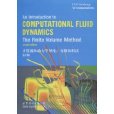《計算流體動力學導論》是2010年4月1日世界圖書出版公司出版的圖書,作者是費斯泰赫、W.Malalasekera,本書主要是讓更多讀者了解支持高級本科水平、研究生研究和商業CFD代碼的新工業用戶的教學。
基本介紹
- 書名:計算流體動力學導論
- ISBN: 9787510005572, 7510005574
- 頁數:503
- 出版社:世界圖書出版公司
- 出版時間:2010年4月1日
- 裝幀:平裝
- 開本:16
內容簡介,目錄,
內容簡介
《計算流體動力學導論:有限體積法(第2版)(英文版)》內容簡介:WewerepleasantlysurprisedbythereadyacceptanceofthefirsteditionofourbookbytheCFDcommunityandbytheamountofpositivefeedbackreceivedoveraperiodof10years.Tousthishasprovidedjustificationofouroriginalplan,whichwastoprovideanaccessibleintroductiontothisfast-growingtopictosupportteachingatseniorundergraduatelevel,post-graduateresearchandnewindustrialusersofcommercialCFDcodes.Oursecondeditionseekstoenhanceandupdate.Thestructureanddidacticapproachofthefirsteditionhavebeenretainedwithoutchange,butaug-mentedbyaselectionofthemostimportantdevelopmentsinCFD.
目錄
Preface
Acknowledgements
1 Introduction
1.1 What is CFD?
1.2 How does a CFD code work?
1.3 Problem solving with CFD
1.4 Scope of this book
2 Conservation laws of fluid motion and boundary conditions
2.1 Governing equations of fluid flow and heat transfer
2.2 Equations of state
2.3 Navier-Stokes equations for a Newtonian fluid
2.4 Conservative form of the governing equations of fluid flow
2.5 Differential and integral forms of the general transport equations
2.6 Classification of physical behaviours
2.7 The role of characteristics in hyperbolic equations
2.8 Classification method for simple PDEs
2.9 Classification of fluid flow equations
2.10 Auxiliary conditions for viscous fluid flow equations
2.11 Problems in transonic and supersonic compressible flows
2.12 Summary
3 Turbulence and its modelling
3.1 What is turbulence?
3.2 Transition from laminar to turbulent }low
3.3 Descriptors of turbulent flow
3.4 Characteristics of simple turbulent flows
3.5 The effect of turbulent fluctuations on properties of the mean flow
3.6 Turbulent flow calculations
3.7 Reynolds-averaged Navier-Stokes equations and classical turbulence models
3.8 Large eddy simulation
3.9 Direct numerical simulation
3.10 Summary
4 The finite volume method for diffusion problems
4.1 Introduction
4.2 Finite volume method for one-dimensional steady state diffusion
4.3 Worked examples: one-dimensional steady state diffusion
4.4 Finite volume method for two-dimensional diffusion problems
4.5 Finite volume method for three-dimensional diffusion problems
4.6 Summary
5 The finite volume method for convection-diffusion problems
5.1 Introduction
5.2 Steady one-dimensional convection and diffusion
5.3 The central differencing scheme
5.4 Properties of discretisation schemes
5.5 Assessment of the central differencing scheme for convectiondiffusion problems
5.6 The upwind differencing scheme
5.7 The hybrid differencing scheme
5.8 The power-law scheme
5.9 Higher-order differencing schemes for convection-diffusion problems
5.10 TVD schemes
5.11 Summary
6 Solution algorithms for pressure-velocity
6.1 Introduction
6.2 The staggered grid
6.3 The momentum equations
6.4 The SIMPLE algorithm
6.5 Assembly ora complete method
6.6 The SIMPLER algorithm
6.7 The SIMPLEC algorithm
6.8 The PISO algorithm
6.9 General comments on SIMPLE, SIMPLER, SIMPLEC and PISO
6.10 Worked examples of the SIMPLE algorithm
6.11 Summary
7 Solution of discretised equations
7.1 Introduction
7.2 The TDMA
7.3 Application of the TDMA to two-dimensional problems
7.4 Application of the TDMA to three-dimensional problems
7.5 Examples
7.6 Point4terative methods
7.7 Multigrid techniques
7.8 Summary
8 the finite volume method for unsteady flows
8.1 Introduction
8.2 One-dimensional unsteady heat conduction
8.3 Illustrative examples
8.4 Implicit method for two- and three-dimensional problems
8.5 Discretisation of transient convection-diffusion equation
8.6 Worked example of transient convection-diffusion using QUICK differencing
8.7 Solution procedures for unsteady flow calculations
8.8 Steady state calculations using the pseudo-transient approach
8.9 A brief note on other transient schemes
8.10 Summary
9 Implementation of boomfary confftions
9.1 Introduction
9.2 Inlet boundary conditions
9.3 Outlet boundary conditions
9.4 Wall boundary conditions
9.5 The constant pressure boundary condition
9.6 Symmetry boundary condition
9.7 Periodic or cyclic boundary condition
9.8 Potential pitfalls and final remarks
10 Errors and uncertainty in CFD modelling
10.1 Errors and uncertainty in CFD
10.2 Numerical errors
10.3 Input uncertainty
10.4 Physical model uncertainty
10.5 Verification and validation
10,6 Guidelines for best practice in CFD
10.7 Reporting/documentation of CFD simulation inputs and results
10.8 Summary
11 Methods for dealing with complex geometries
11.1 Introduction
11.2 Body-fitted co.ordinate grids for complex geometries
11.3 Catesian vs. curvilinear grids - an example
11.4 Curvilinear grids - difficulties
11.5 Block-structured grids
11.6 Unstructured grids
11.7 Discretisation in unstructured grids
11.8 Discretisafion of the diffusion term
11.9 Discretisafion of the convective term
11.10 Treatment of source terms
11.11 Assembly of discretised equations
11.12 Example calculations with unstructured grids
11.13 Pressure-velocity coupling in unstructured meshes
11.14 Staggered vs. co-located grid arrangements
11.15 Extension of the face velocity interpolation method to unstructured meshes
11.16 Summary
12 CFD modelling of combustion
12.1 Introduction
12.2 Application of the first law of thermodynamics to a combustion system
12.3 Enthalpy of formation
12.4 Some important relationships and properties of gaseous mixtures
12.5 Stoichiometry
12.6 Equivalence ratio
12.7 Adiabatic flame temperature
12.8 Equilibrium and dissociation
12.9 Mechanisms of combustion and chemical kinetics
12.10 Overall reactions and intermediate reactions
12.11 Reaction rate
12.12 Detailed mechanisms
12.13 Reduced mechanisms
12.14 Governing equations for combusting flows
12.15 The simple chemical reacting system (SCRS)
12.16 Modelling of a laminar diffusion flame - an example
12.17 CFD calculation of turbulent non-premixed combustion
12.18 SCRS model for turbulent combustion
12.19 Probability density function approach
12.20 Beta pdf
12.21 The chemical equilibrium model
12.22 Eddy break-up model of combustion
12.23 Eddy dissipation concept
12.24 Laminar flamelet model
12.25 Generation oflaminar, flamelet libraries
12.26 Statistics of the non-equilibrium parameter
12.27 Pollutant formation in combustion
12.28 Modelling of thermal NO formation in combustion
12.29 Flamelet-based NO modelling
12.30 An example to illustrate laminar flamelet modelling and NO modelling of a turbulent flame
12.31 Other models for non-premixed combustion
12.32 Modelling ofpremixed combustion
12.33 Summary
13 Numedcal calculation of radiative heat transfer
13.1 Introduction
13.2 Governing equations of radiative heat transfer
13.3 Solution methods
13.4 Four popular radiation calculation techniques suitable for CFD
13.5 Illustrative examples
13.6 Calculation of radiative properties in gaseous mixtures
13.7 Summary
Appendix A Accuracy of a flow simulation
Appendix B Non-uniform grids
Appendix C Calculation of source terms
Appendix D Limiter functions used in Chapter 5
Appendix E Derivation of one-dimensional governing equations for steady, incompressible flow through a planar nozzle
Appendix F Alternative derivation for the term (n . grad Ai) in Chapter 11
Appendix G Some examples
Bibliography
Index

